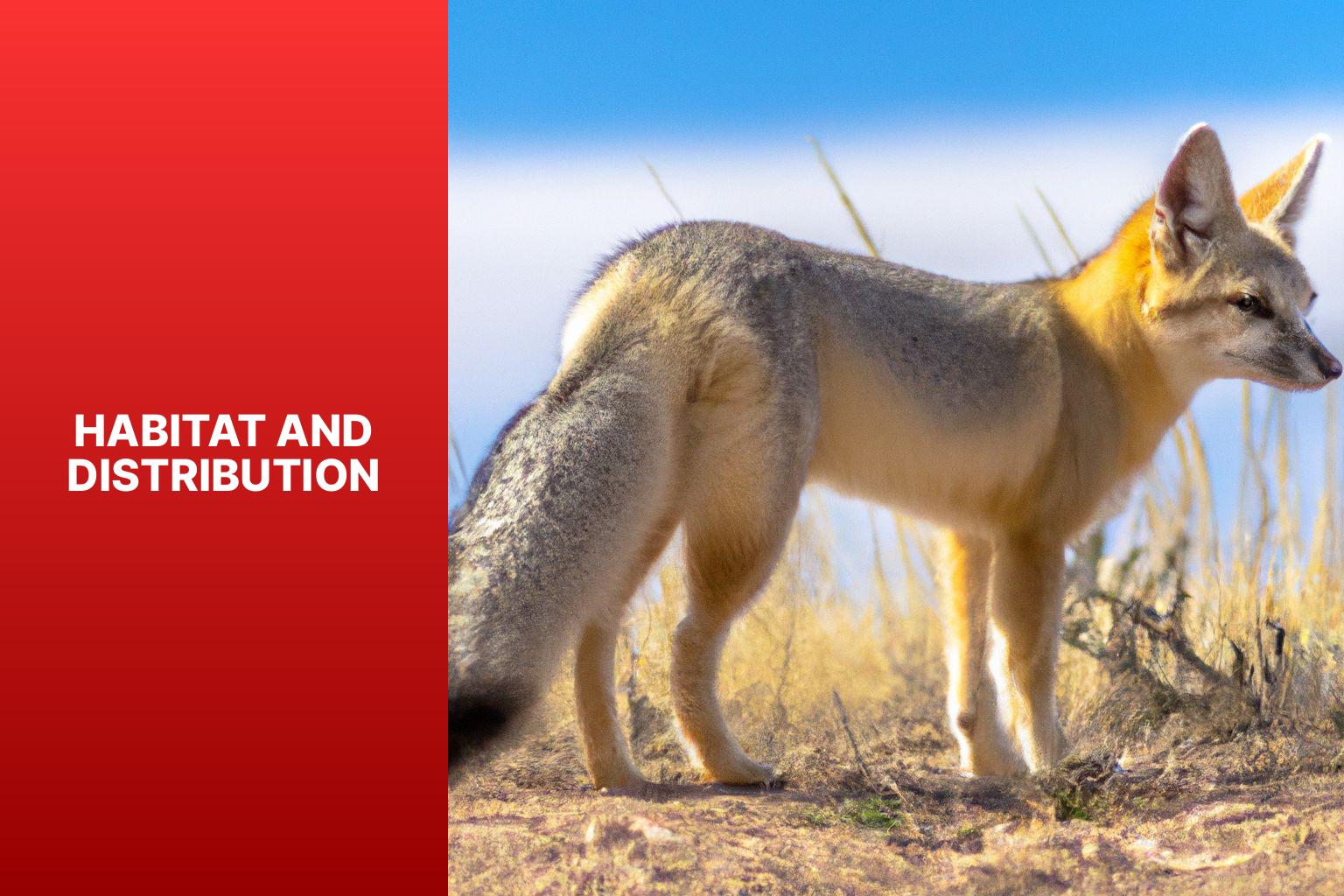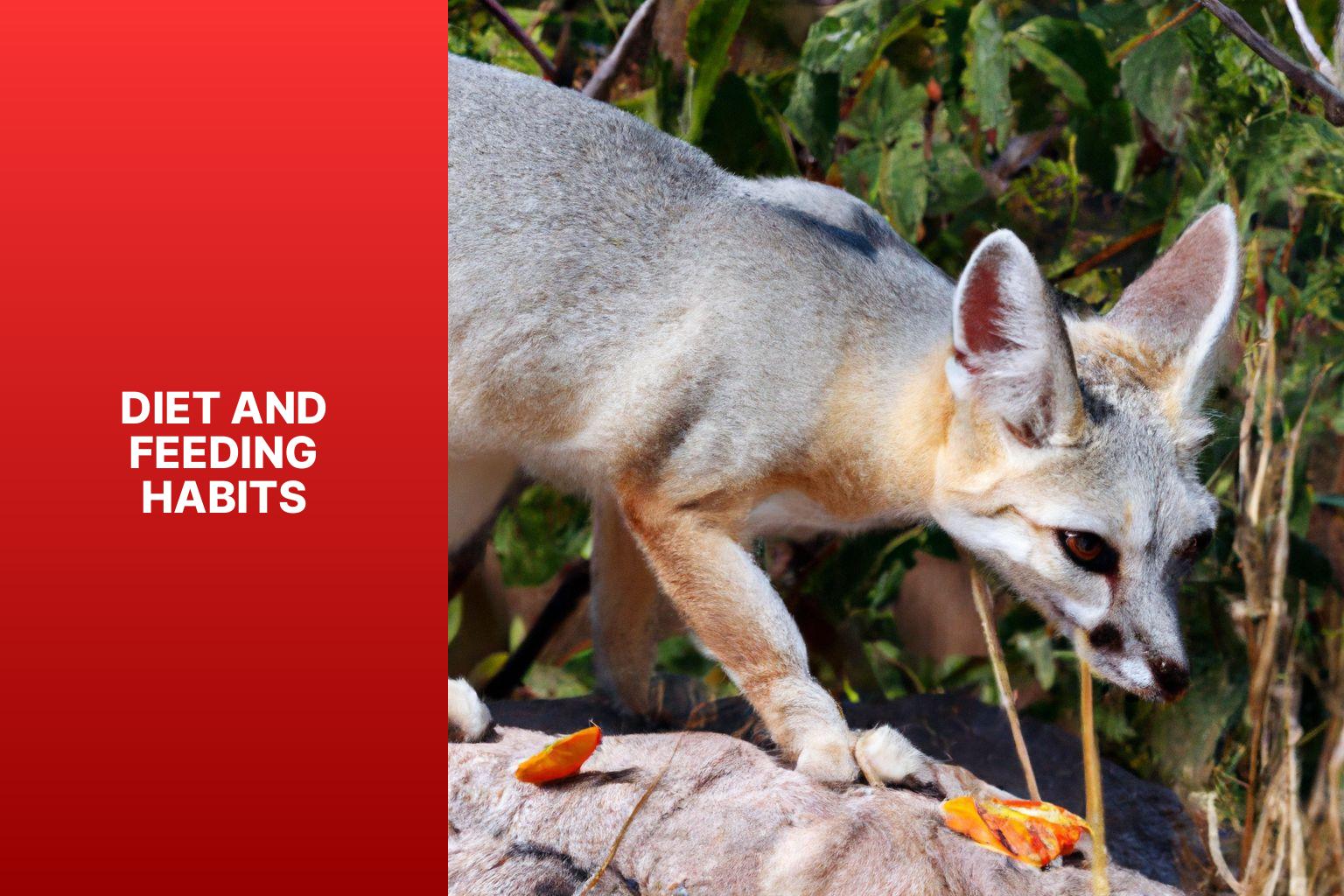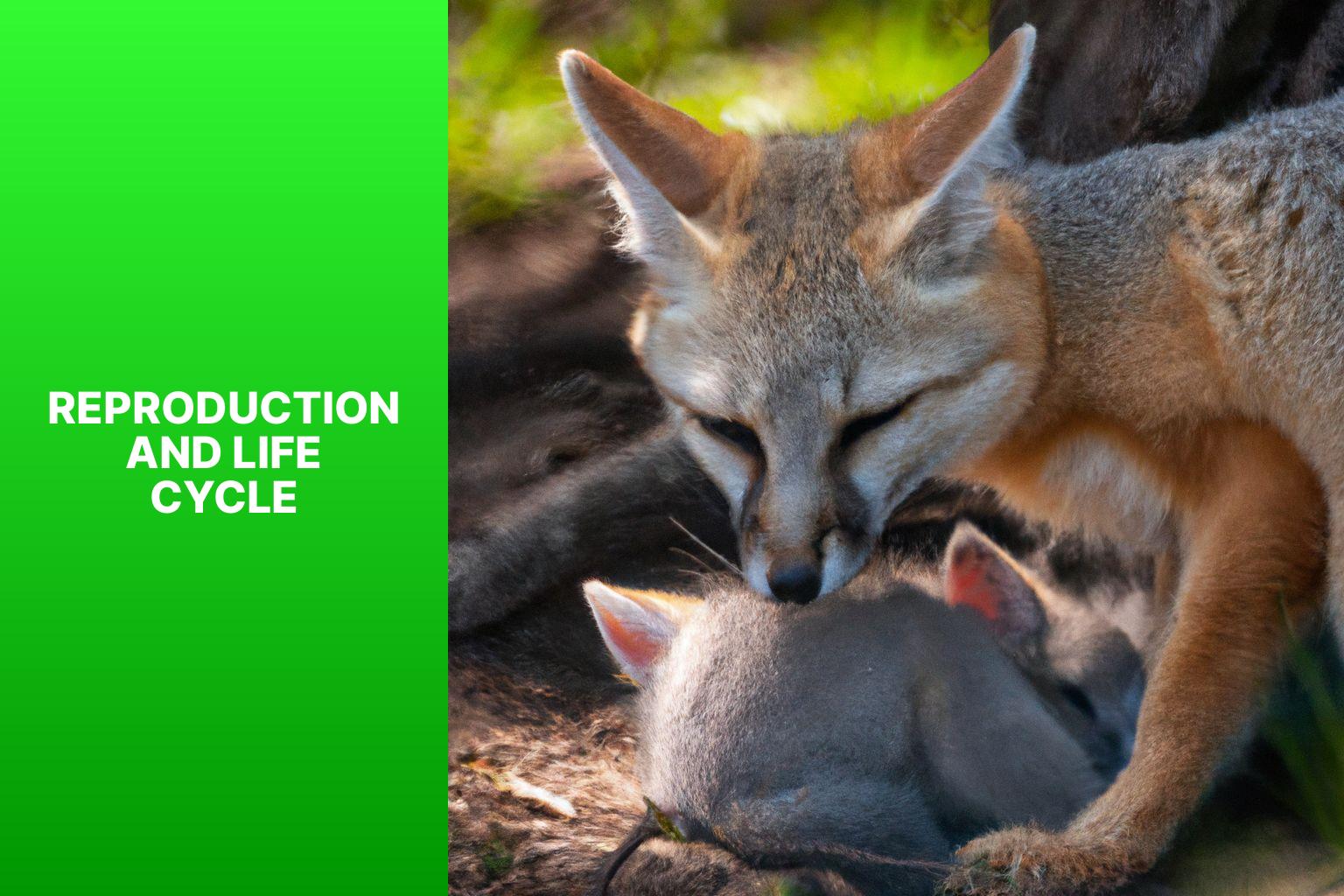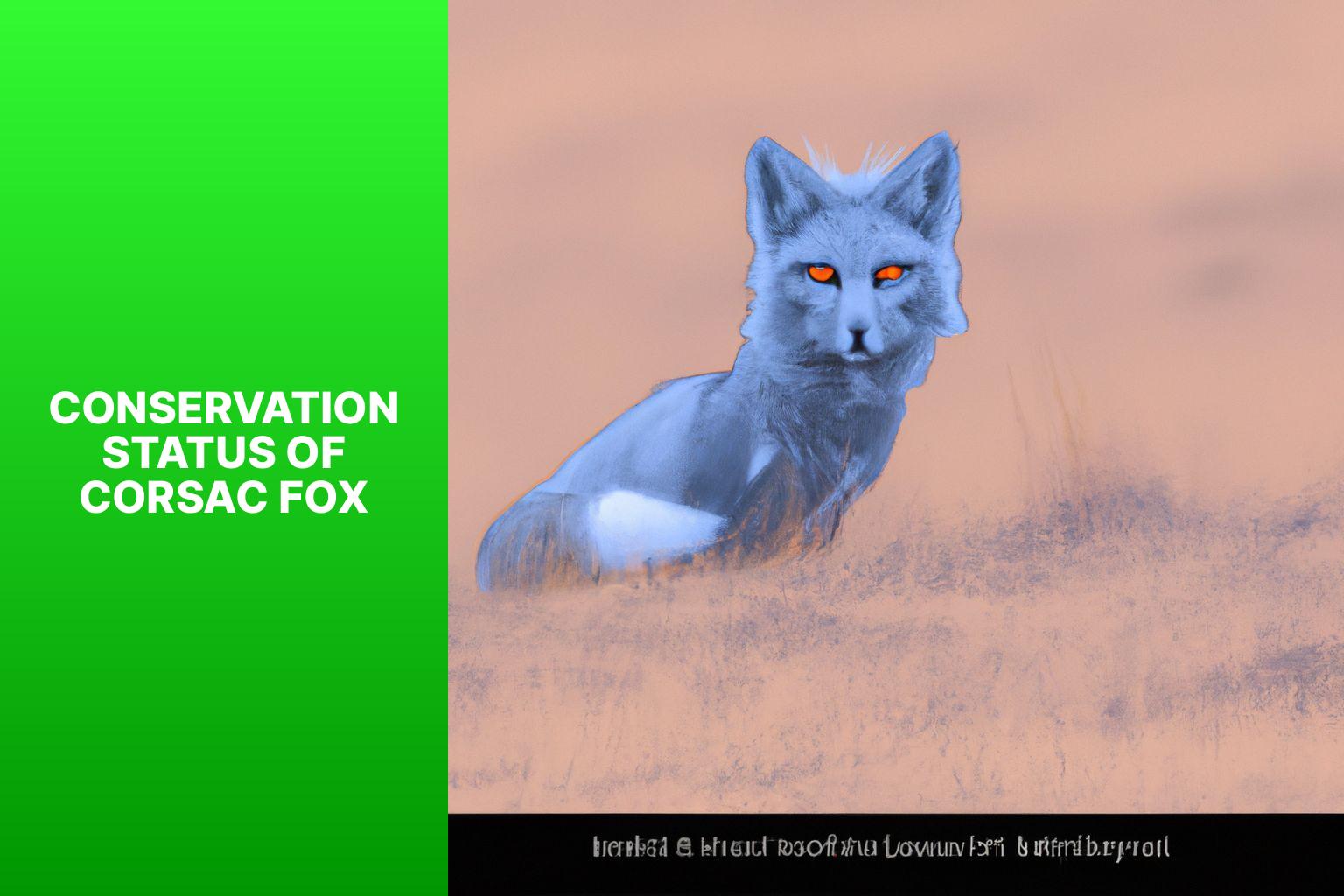The Corsac Fox is a fascinating species known for its unique physical characteristics and remarkable survival strategies. This article explores various aspects of the Corsac Fox’s life, habitat, behavior, and adaptations. Understanding these factors can provide insights into how this species has evolved to thrive in its environment.
Corsac Foxes, scientifically known as Vulpes corsac, are small foxes native to the steppes and deserts of Central Asia. They have a distinct appearance, with a slender body, large ears, and a bushy tail. Their coat colors range from pale yellow to silver-gray, providing effective camouflage in their arid surroundings.
In terms of habitat and distribution, Corsac Foxes are well adapted to survive in extreme environments. They primarily reside in semi-arid grasslands, desert fringes, and mountainous regions. Their geographical range extends across several countries, including Mongolia, China, Kazakhstan, and Russia.
Diet plays a crucial role in the survival of Corsac Foxes. Their diet mainly consists of small mammals, such as rodents, hares, and pikas, as well as insects and plant matter. They employ various hunting and feeding strategies, including pouncing and digging, to secure their prey and meet their nutritional needs.
Reproduction and life cycle patterns are also essential for the survival of Corsac Foxes. They exhibit monogamous mating behavior, where a male and a female form a long-term bond. The gestation period lasts for approximately two months, after which the female gives birth to a litter of pups. The parents provide dedicated care and protection to the offspring until they reach independence.
To survive in their challenging environment, Corsac Foxes have developed a range of adaptations and survival strategies. Their nocturnal behavior helps them avoid extreme temperatures and reduce the risk of predation. They utilize camouflage and have excellent burrowing skills to create underground dens for shelter and protection. They also exhibit a social structure and communication system within their packs, enabling effective cooperation in hunting and defense. They have advanced predator avoidance techniques and possess thermoregulation mechanisms to withstand the harsh conditions of their habitat.
The conservation status of Corsac Foxes is of concern due to various factors, including habitat loss, hunting, and climate change. Efforts are being made to protect their natural habitats and raise awareness about the importance of their conservation.
By exploring the unique characteristics, adaptations, and survival strategies of the Corsac Fox, we can gain a deeper appreciation for the remarkable ways in which this species has thrived in its challenging environment.
Contents
- 1 Key takeaway:
- 2 Physical Characteristics of Corsac Fox
- 3 Habitat and Distribution
- 4 Diet and Feeding Habits
- 5 Reproduction and Life Cycle
- 6 Adaptations and Survival Strategies
- 7 Conservation Status of Corsac Fox
- 8 Frequently Asked Questions
- 8.1 1. What are the habitat preferences of the Corsac fox?
- 8.2 2. How do Corsac foxes hunt for prey?
- 8.3 3. How do Corsac foxes raise their young?
- 8.4 4. What are the threats to Corsac fox populations?
- 8.5 5. How do Corsac foxes survive extreme weather conditions?
- 8.6 6. Do Corsac foxes have a well-defined range?
Key takeaway:
- Corsac foxes have adapted various survival strategies to thrive in their environments.
- Their physical characteristics, such as their keen sense of hearing and ability to dig burrows, enable them to survive in harsh conditions.
- Corsac foxes are nocturnal animals that use camouflage to blend in with their surroundings and avoid predators.
Physical Characteristics of Corsac Fox

Photo Credits: Foxauthority.Com by Jeffrey Young
When discussing the physical characteristics of the Corsac Fox, it is important to note the following:
– Size: Corsac Foxes are small, measuring about 50 to 60 centimeters in length, with an additional 25 to 30 centimeters in tail length. They typically weigh between 1.5 to 3 kilograms.
– Appearance: These foxes have a slender build with long, bushy tails. They possess a thick fur coat that changes color according to the season, ranging from grayish-brown in summer to silver-white in winter.
– Ears: Corsac Foxes have large, pointy ears that aid in their excellent hearing. These ears also help regulate body temperature in extreme climates.
– Adaptations: Corsac Foxes are well adapted for their environment. They have strong legs for running and digging, and their fur coats protect them from harsh weather conditions.
– Habitat: Native to the steppes and semi-deserts of Central Asia, Corsac Foxes are well-suited to survive in hot and dry climates. Their burrow dwellings provide shelter from extreme temperatures and predators.
A true story demonstrates the physical characteristics of the Corsac Fox. A researcher observed a mother fox and her cubs surviving a harsh winter. Despite freezing temperatures and limited food, the foxes’ thick fur coats kept them warm and protected. The foxes used their agile bodies and strong legs to search for food and dig burrows in the snow for shelter. The observer noted the Corsac Foxes’ large, pointy ears, which played a crucial role in detecting sounds of prey and threats. This story highlights how the physical traits of the Corsac Fox contribute to their survival in challenging environments.
Habitat and Distribution

Photo Credits: Foxauthority.Com by Raymond Hill
The Corsac Fox is found in grasslands and semideserts in Mongolia, Russia, Kazakhstan, and China. Its habitat and distribution range allows it to adapt well to different environments, altitudes, and climates.
The Corsac Fox is known for creating complex burrow systems for protection and shelter, with multiple entrances. Through its ability to adapt and construct elaborate burrows, the Corsac Fox demonstrates its resilience and adaptability to various landscapes and climatic conditions.
Understanding the Corsac Fox’s habitat and distribution is crucial in appreciating its survival skills in different habitats.
Where Do Corsac Foxes Live?
Corsac foxes, scientifically known as Vulpes corsac, can be found in various ecosystems in the Eurasian region, including deserts, semi-deserts, steppes, and grasslands. These foxes are well adapted to the harsh and arid environments they inhabit.
Corsac foxes primarily reside in Central Asia, specifically in countries like Kazakhstan, Mongolia, China, Russia, and Turkmenistan. They can also be found in regions of Iran, Afghanistan, and Pakistan.
These foxes prefer open landscapes with low vegetation, as it enhances their visibility and mobility. They are abundant in the grasslands of Central Asia, which offer an abundance of prey and suitable conditions for burrowing. Corsac foxes frequently inhabit sandy or gravelly areas, as they are ideal for digging burrows.
The specific locations where Corsac foxes live depend on several factors such as the availability of food, shelter, and the presence of other predators. In colder regions, they tend to occupy higher elevation areas, providing better insulation and protection from extreme weather conditions.
Geographical Range of Corsac Foxes
The geographical range of Corsac foxes spans parts of Asia and Europe. They primarily inhabit the steppes and semi-deserts of Central Asia, including Mongolia, China, Kazakhstan, Russia, and Iran.
To provide a clearer understanding, the following table illustrates the specific regions where Corsac foxes inhabit:
| Country | Region |
| Mongolia | Eastern and Central Mongolia |
| China | Northern and Northwestern China |
| Kazakhstan | Southern and Western Kazakhstan |
| Russia | Southern Siberia and Altai Republic |
| Iran | Northern Iran |
Corsac foxes are well adapted to the harsh climates of these regions, with thick fur to endure cold winters and hot summers. Their ability to adapt allows them to inhabit various environmental conditions.
It is important to note that while Corsac foxes have a wide geographical range, they are not evenly distributed throughout these areas. They tend to prefer open grasslands, sandy terrains, and desert areas with sparse vegetation. These habitats offer suitable conditions for hunting and burrowing.
Understanding the geographical range of Corsac foxes is crucial for assessing their conservation status and ensuring their protection in specific regions. Conservation efforts should focus on preserving their habitats and addressing any threats they may face in these areas.
Diet and Feeding Habits

Photo Credits: Foxauthority.Com by Brian Martin
Diet and Feeding Habits of Corsac Foxes
Corsac foxes have a diverse diet, allowing them to adapt to different environments. Their feeding habits are crucial for survival. They primarily eat small mammals such as rodents, pikas, and hares, which make up 75% of their diet. They also consume birds, insects, reptiles, and fruits, accounting for the remaining 25%. Corsac foxes are opportunistic hunters and foragers with excellent hearing and keen eyesight. They are most active during dawn and dusk when their primary prey species are also active. Corsac foxes require about 200 kilocalories per day, depending on factors like age, reproductive status, and environmental conditions. Their high metabolic rate enables efficient energy conversion for essential body functions and survival. If you encounter a corsac fox in the wild, avoid feeding it human food to prevent disruption of their natural feeding habits and dependency, which can harm their overall well-being.
What Do Corsac Foxes Eat?
Corsac foxes are opportunistic omnivores. They eat small mammals like rodents, hares, and pikas, which make up the majority of their diet. They also consume birds and their eggs to diversify their food sources. In addition to animal prey, they eat insects, fruits, berries, and vegetation. This variety in their diet allows them to adapt to different environments and find food when prey is scarce. They have been observed eating grasshoppers, beetles, berries, and fruits. Corsac foxes also scavenge carrion, feeding on the remains of larger animals. Their diet can vary depending on the season, location, and prey availability. They are adaptable eaters and will consume available food sources in their habitat. What Do Corsac Foxes Eat?
Hunting and Feeding Strategies
Hunting and Feeding Strategies
When it comes to hunting and feeding, Corsac foxes have developed efficient tactics for survival and obtaining nourishment in their natural habitats.
Pro-tip: To observe Corsac foxes in their natural habitat and witness their impressive hunting and feeding strategies, consider visiting protected areas or national parks where they reside. Remember to maintain a respectful distance to avoid disturbing their natural behavior.
Reproduction and Life Cycle

Photo Credits: Foxauthority.Com by Ronald King
Reproduction and the life cycle of Corsac foxes offer fascinating insights into their mating behavior, gestation period, and care for offspring. Discover the unique strategies adopted by these resilient creatures to ensure the survival of their species. From elaborate mating rituals to nurturing their young, Corsac foxes demonstrate remarkable instincts and behaviors. Join us as we explore the intriguing world of their reproduction and life cycle, shedding light on the wonder and intricacy of nature’s designs.
Mating Behavior of Corsac Foxes
The mating behavior of Corsac Foxes is truly captivating. Throughout the mating season, these foxes exhibit specific behaviors that are designed to attract a mate.
One important aspect of their mating behavior is their courtship rituals. Corsac Foxes engage in various displays of dominance, such as chasing, vocalizations, and marking territories with scent, all in an effort to entice potential mates.
It is interesting to note that Corsac Foxes are monogamous creatures. They form long-term partnerships with only one mate, ensuring stable pair bonds and successful rearing of offspring. This behavior is essential for the continuation of their species.
During the mating process, females use vocalizations and physical cues to signal their readiness to mate. Males then approach these females and engage in mounting behavior. This ultimately leads to copulation, which is necessary for fertilization to occur. Through this process, the conception of offspring is ensured.
One remarkable fact about Corsac Foxes is their high reproductive rate. They give birth to multiple offspring in a litter, increasing the chances of species survival. This reproductive success is a testament to the careful mating behavior of these foxes.
Understanding the intricacies of Corsac Foxes’ mating behavior is crucial for researchers and conservationists alike. By comprehending these behaviors, we can work towards better protecting these unique creatures and ensuring the continuation of their species.
Gestation Period and Birth
The female corsac fox experiences significant changes in her body during the gestation period and birth. The gestation period for a corsac fox lasts approximately 52 to 60 days. After mating, a fertilized egg implants into her uterus and develops into an embryo.
After the gestation period, the female corsac fox gives birth to a litter of 2 to 6 pups in a secure and secluded burrow. The mother fox prepares the birthing den with soft materials, like grass and fur.
The newborn corsac fox pups are blind, deaf, and helpless. They rely on their mother for warmth, nourishment, and protection. The mother fox nurses her pups until they can eat solid food.
Initially, the mother closely watches her young and rarely leaves the den. As the pups grow older, they explore their surroundings and become more independent. The mother continues to care for and teach her offspring survival skills.
It’s important to note that the gestation period and birth process may vary slightly depending on environmental conditions and resource availability. The corsac fox’s reproductive cycle generally follows this pattern, ensuring the survival and growth of the species.
Care for the Offsprings
Corsac Foxes demonstrate strong parental instincts and provide necessary support for their offspring. Care for the offspring is crucial for their survival and success. Here are the steps involved in caring for the offspring:
1. Protect: The mother Corsac Fox creates a den in a secluded area to keep her young safe from predators.
2. Nurse: The mother Corsac Fox breastfeeds her young, providing them with essential nutrition for growth and development.
3. Clean: The mother Corsac Fox regularly grooms her offspring to ensure their cleanliness and remove parasites or foreign objects.
4. Teach: As the young Corsac Foxes grow, the mother guides them in learning important survival skills like hunting, foraging, and social behavior.
5. Supervise: The mother Corsac Fox closely monitors her offspring, intervening if any threat or danger arises.
6. Wean: The young Corsac Foxes transition from milk to solid food under their mother’s guidance, preparing them for independent hunting and foraging.
7. Independence: Eventually, the young Corsac Foxes become independent, establishing their own territories and finding mates for future generations.
Caring for the offspring is crucial for the survival and success of the Corsac Fox population. It ensures the transfer of essential knowledge and skills from one generation to the next, allowing the young Corsac Foxes to thrive in their challenging environments.
Adaptations and Survival Strategies
In the wild world of Corsac foxes, survival is more than just a game it s a series of clever strategies. Join me as we explore their remarkable adaptations and survival techniques. From their savvy nocturnal behavior to their expert camouflage and burrowing skills, these foxes have it all figured out. But that’s not all, we’ll also uncover their intricate social structure and communication methods, discover how they outsmart predators, and even peek into their ability to regulate body temperature in extreme environments. Get ready to be impressed by nature’s ultimate survivalists!
Nocturnal Behavior
Corsac Foxes are known for their nocturnal behavior. They are primarily active at night, utilizing their excellent night vision to hunt small mammals, insects, birds, and reptiles. During the night, they also exhibit social behaviors, using vocalizations like barks and howls to communicate and establish territories with their pack members. Their keen hearing and sense of smell help them navigate in low-light conditions and detect both prey and potential threats.
The light yellowish-gray fur of Corsac Foxes provides camouflage and protection from predators, perfectly suited for their nocturnal habits. Researchers have dedicated many years to studying and observing the nocturnal behavior of these foxes, gaining valuable insights into their unique adaptations and strategies employed at night. This understanding is crucial for developing effective strategies to protect and preserve their habitat.
Camouflage and Burrowing
Camouflage and burrowing are crucial survival strategies employed by the Corsac fox. These strategies help the fox stay hidden from predators and create safe shelters for themselves and their young. Camouflage, specifically the unique fur coloration of the Corsac fox, enables it to blend into its surroundings. Its coat changes color with the seasons, ranging from grayish-brown in the summer to snow-white in winter. This enables the fox to remain unseen by potential predators while hunting or seeking refuge.
In addition to camouflage, burrowing is another important strategy. Corsac foxes are skilled diggers and use their abilities to create elaborate burrows, also known as dens. These dens provide protection from extreme weather conditions and predators. The burrows have multiple entrances and interconnected tunnels, allowing for escape routes if needed.
The ability to camouflage and create secure burrows is essential for the Corsac fox’s survival in its habitat. These strategies allow them to remain hidden, protect themselves and their young, and increase their chances of successfully navigating their challenging surroundings.
Social Structure and Communication
Corsac foxes possess a sophisticated social structure, making successful communication vital for their survival. Gaining an understanding of their social behavior and communication methods is crucial for comprehending their interactions.
In the Corsac fox communities, the social structure follows a hierarchical pattern. At the pinnacle, there are the dominant alpha male and alpha female. Subordinate males, females, and offspring comprise the rest of the group members. This hierarchical structure fosters cooperation within the group.
Communication plays a pivotal role in maintaining social bonds and coordinating activities among Corsac foxes. They employ a variety of vocalizations, including barks, yelps, growls, and howls, to convey information. These vocalizations serve to communicate warnings, dominance, and attract potential mates.
Visual cues, such as body postures and facial expressions, also contribute to social communication among Corsac foxes. Tail movements and ear positions serve as important cues as well.
The social structure and communication strategies employed by Corsac foxes enhance their chances of survival and reproductive success. These attributes allow for effective coordination during hunting and protection against predators. Ultimately, effective communication strengthens the cohesion of the group.
Gaining an understanding of the social structure and communication methods of Corsac foxes provides valuable insights into their behavior and adaptation strategies. It highlights their exceptional ability to thrive in their habitat as a social species.
Predator Avoidance
Corsac foxes employ a variety of strategies to evade predators and enhance their chances of survival in their habitat. These techniques include camouflage, burrowing, heightened alertness, group living, speed and agility, and being active at night.
One of the predator avoidance strategies utilized by corsac foxes is Exploring the Range and Territory of Corsac Foxes: An In-Depth Guide. Their fur is well-adapted to blend seamlessly with their surroundings, allowing them to remain concealed from potential threats.
Corsac foxes engage in burrowing behavior. They dig burrows in the ground, which serve as resting places, shelters for raising their young, and a refuge from predators.
Corsac foxes also possess excellent hearing and keen eyesight, making them highly alert to potential dangers. This acute sensory perception enables them to detect threats promptly and take evasive action or find a hiding spot to avoid harm.
These foxes exhibit a gregarious nature by living in small family groups. This group living strategy provides multiple advantages, including enhanced safety. By banding together, corsac foxes can collectively fend off predators and increase their chances of survival.
To further enhance their predator avoidance capabilities, corsac foxes possess remarkable speed and agility. They are capable of reaching speeds of up to 37 miles per hour, making it challenging for predators to catch them. This rapid movement allows them to effectively evade pursuers and ensure their safety.
Corsac foxes are primarily active during the night or twilight hours. This activity pattern reduces the risk of encountering predators, as many potential threats are less active during these times. By avoiding predators in this manner, corsac foxes are able to minimize the danger they face.
By employing these various predator avoidance techniques, corsac foxes significantly increase their chances of survival in their environment. These strategies are carefully selected based on the foxes’ surroundings and play a crucial role in their ongoing success. Corsac foxes thrive by employing a range of predator avoidance techniques, ensuring their continued survival and prosperity.
Thermoregulation in Extreme Environments
Thermoregulation in Extreme Environments is crucial for the survival of the Corsac Fox. These foxes have adapted to regulate their body temperature and cope with temperature fluctuations.
Corsac Foxes are active in hot and cold environments, so thermoregulation is essential. In hot environments, they cool down by dissipating heat through their large ears, which have a high density of blood vessels. They can also pant to regulate their body temperature through evaporative cooling.
In extreme cold environments, Corsac Foxes rely on their fur for warmth. They have a dense, double-layered fur coat that provides insulation and traps body heat. The outer layer is coarse and guard hairs, while the inner layer is soft and dense.
Another adaptation for thermoregulation is the ability to adjust their metabolic rate. Corsac Foxes can conserve energy during extreme temperatures by adjusting the rate at which they burn calories. This is helpful when food availability is limited.
Conservation Status of Corsac Fox

Photo Credits: Foxauthority.Com by Henry Thomas
The conservation status of the Corsac Fox is “Least Concern” according to the International Union for Conservation of Nature (IUCN). This means the population of the Corsac Fox is stable and there are no immediate threats to its survival in the wild. Here is a breakdown of the conservation status:
| Conservation status: | Least Concern |
| Population trend: | Stable |
| Main threats: | None |
| Habitat: | Grasslands and semi-deserts |
The Corsac Fox currently faces no significant threats to its population. It can adapt to various habitats, including grasslands and semi-deserts. This adaptability, along with its stable population trend, contributes to its favorable conservation status.
It is important to note that habitat loss and fragmentation caused by human activities like agriculture and infrastructure development could impact the Conservation Status of Corsac Fox population in the future. Conservation efforts should focus on preserving their natural habitats and minimizing human impact on their ecosystems.
Frequently Asked Questions
1. What are the habitat preferences of the Corsac fox?
The Corsac fox prefers open grassy steppes and semi-deserts, avoiding dense vegetation, mountainous regions, and true deserts with drifting sands.
2. How do Corsac foxes hunt for prey?
Corsac foxes are nocturnal hunters and rely on their keen senses of sight, hearing, and smell to find prey. They hunt insects, small rodents, hares, pikas, and scavenge for carrion and human refuse.
3. How do Corsac foxes raise their young?
Corsac foxes form pair bonds and are monogamous. The breeding season starts in January and ends in March. The female creates a birthing den and gives birth to 2-6 kits after a gestation period of 52 to 60 days. Both parents assist in raising the young, and kits begin to eat meat at 4 weeks.
4. What are the threats to Corsac fox populations?
The major threat to Corsac foxes is poaching for their fur. They are also vulnerable to overgrazing by livestock, landscape development, and natural disasters. The species is currently considered common and widespread.
5. How do Corsac foxes survive extreme weather conditions?
During harsh weather, Corsac foxes shelter in their dens or migrate south. They rely on local antelope herds to compress the snow, as they cannot hunt in deep snow. This allows them to find food and survive in their habitat.
6. Do Corsac foxes have a well-defined range?
Corsac foxes do not have a defended territory and can display long-distance movements. They are nomadic hunters and sometimes form packs. They generally avoid human disturbances and have specific habitat preferences.


